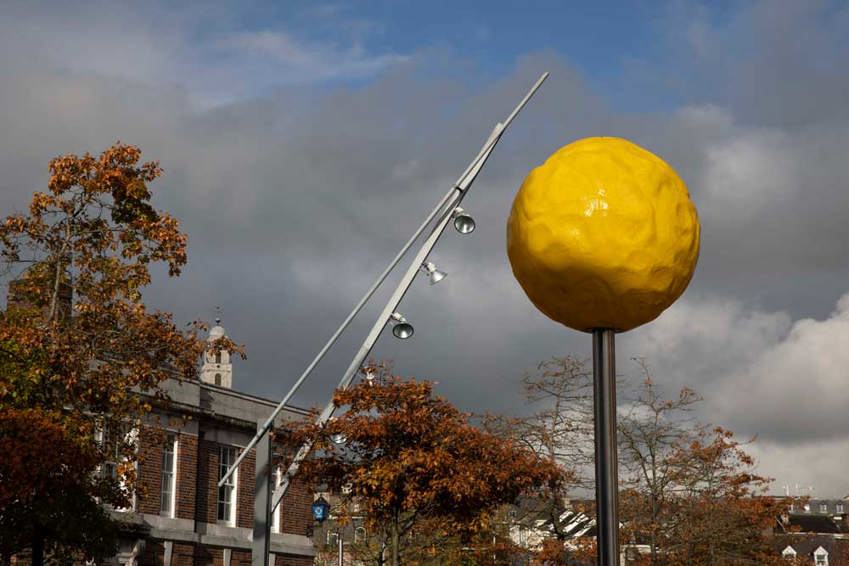Urban Mirror
A beautifully crafted table in a cultural corner
Urban Mirror on Cornmarket Street (Coal Quay) by plattenbaustudio is a beautifully crafted large table with an atmospheric light that will provide a sculptural pavilion in a cultural corner of the city centre.

It was inspired by the street's vibrant history as a market place, and the current weekly Saturday Street Market from 10am-12pm. Made of durable and playful stainless steel, it has 16 fixed chairs and can seat up to 50 people. The yellow globe also provides a warming glow when the sun sets.

Designed by architects Jennifer O’Donnell and Jonathan Janssens, and fabricated by Sara Murphy and Frank Prendergast of Space Forms Ltd. Urban Mirror is inended to be a space used by the public.

The architects were inspired by how people interact with everyday things and the cultural environment of Coal Quay. They wanted to create a space for people to come together. The freeform table, which can accommodate up to 50 people, works with the slope of the site so that the majority of the piece is at standard sitting height, while at one side children can easily sit on a low chair, and at the opposite end an adult can lean at counter height. They designed the rounded edges to weave in and out so that small groups of people can create their own corners and it also allows wheelchairs, mobility scooters and buggies to fit comfortably at the table. The intent is for people to use Urban Mirror as a place to come together to talk, to eat, to play and to interact.

The architects used stainless steel as the main material for its durable and elegant qualities. Its reflective nature will also light the square on a bright day. The elevated ball in the centre provides a focus from all directions. As the sun sets it will light up, giving a warm glow to the area.
About the Architects

plattenbaustudio are an architecture and drawing studio founded in 2018 and based in Berlin. They focus on the design of architectural projects in parallel to their work in the fields of architectural drawing and research. Their primary interest lies in the everyday interaction between people and space, and they believe in designing for the realities of architecture in use.

Their approach to architecture is guided by critical observation. They regularly work with universities to connect directly with students and staff through workshops, research and teaching. Their projects are grounded in context but attempt to highlight the user at every point, to make architecture that is place-specific, playful and responsive.

The Irish architects, who are based in Berlin, have a strong connection with Cork. They have given workshops at the Cork Centre for Architectural Education (CCAE) in UCC, and recently presented a large-scale drawing of James Joyce that was part of the ‘A Line Around an Idea’ exhibition in The Glucksman last year.

